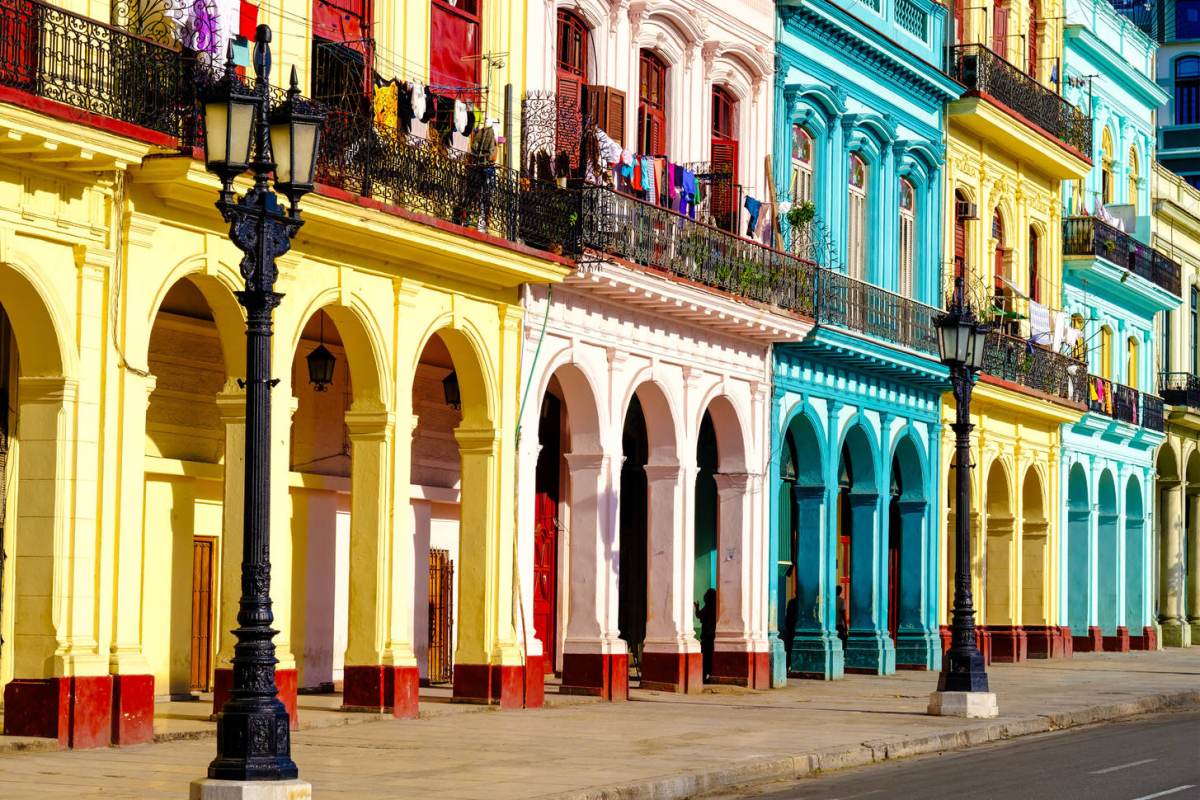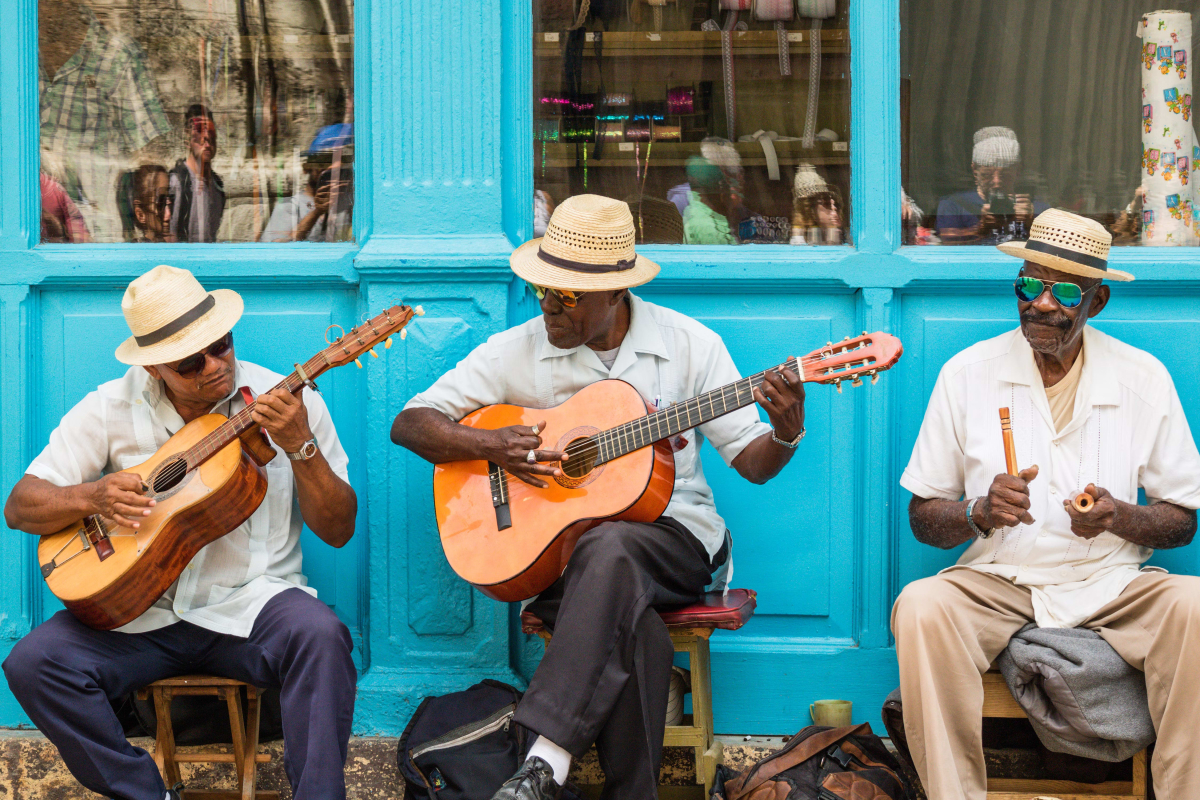Cuba is a country of rhythm, resilience, and revolutionary spirit — a Caribbean island where colonial charm, vintage cars, and vibrant culture meet tropical beaches and world-famous music. This About Cuba guide introduces the island’s geography, people, culture, and history to help you understand what makes this destination so uniquely captivating.

Quick Facts About Cuba
- Official Name: Republic of Cuba (República de Cuba)
- Capital City: Havana (La Habana)
- Population: ≈ 11 million (2025 estimate)
- Official Language: Spanish
- Currency: Cuban Peso (CUP)
- Time Zone: GMT –5 (EST)
- Calling Code: +53
Geography & Climate
Cuba is the largest island in the Caribbean, stretching nearly 1,250 km (780 mi) from east to west. It is surrounded by the Gulf of Mexico, the Atlantic Ocean, and the Caribbean Sea — a location that blesses the country with warm weather year-round.
- Dry season (Nov–Apr): Ideal for beaches and outdoor exploration (25–28 °C average).
- Wet season (May–Oct): Hotter and more humid with occasional tropical showers (30 °C average).
- Hurricane season: June to November — monitor forecasts when traveling during this period.

History & Heritage
Cuba’s history is a story of exploration, colonization, revolution, and resilience. First inhabited by Taíno and Ciboney peoples, the island was claimed by Spain in 1492. It remained a Spanish colony until 1898, when the Spanish-American War led to independence under U.S. influence. The Cuban Revolution of 1959, led by Fidel Castro and Che Guevara, shaped the nation’s identity and political trajectory.
Today, Cuba blends its revolutionary legacy with cultural pride — reflected in everything from art murals to vintage 1950s cars that still cruise Havana’s streets.
Culture & People
Cuban culture is an intoxicating mix of African, Spanish, and Caribbean influences expressed through music, dance, and art. Locals, known for their warmth and humor, welcome visitors with genuine curiosity.
- Music: Son Cubano, Salsa, Bolero, and Rumba set the rhythm of daily life.
- Dance: Learn to move at Havana’s Casa de la Música or Trinidad’s Casa de la Trova.
- Art: Street murals and galleries reflect Cuba’s vibrant creative scene.
- Festivals: Havana Jazz Festival and Santiago de Cuba Carnival are must-see events.

Economy & Daily Life
Cuba’s economy combines state control with a growing private sector. Tourism, tobacco, rum, coffee, and biotechnology are key industries. In recent years, government reforms have allowed small private businesses (cuentapropistas) to flourish, creating boutique cafés and guesthouses known as casas particulares.
Despite economic challenges, Cubans are resourceful and community-oriented. Internet access continues to expand, with public Wi-Fi parks and mobile data available across major cities.
Travel Highlights
- Havana Vieja: Cobbled streets, vintage cars, and Spanish colonial architecture.
- Viñales Valley: UNESCO-listed landscape of tobacco fields and limestone mogotes.
- Trinidad: Pastel-colored colonial town frozen in time.
- Varadero: White-sand beaches and turquoise waters.
- Santiago de Cuba: Cultural capital and birthplace of Cuban revolutionary music.
Check our Top Destinations in Cuba guide for detailed highlights and travel inspiration.
Language Tips
Spanish is spoken everywhere, but a few basic phrases go a long way. English is widely understood in hotels and tourist areas, while French and Italian are also common among guides.
- Hello: Hola
- Thank you: Gracias
- Please: Por favor
- How much? ¿Cuánto cuesta?
When to Visit Cuba
The best time to visit Cuba is during the dry season (November to April), when skies are clear and humidity is low. The wet season (May to October) is hotter but lush — perfect for photographers and budget travelers. For detailed monthly breakdowns, visit the Cuba Weather page.
Getting Around Cuba
Transportation in Cuba is an adventure of its own. From vintage taxis to scenic Viazul buses, there’s a mode for every budget and style. Learn how to travel smoothly across the island in our Transportation Guide for Cuba.
Where to Go Next
- Cuba Travel Tips – Essential advice for a smooth visit.
- Cuba Health & Safety – Stay safe and prepared while exploring.
- Food & Drinks in Cuba – Taste local flavors and traditional dishes.
From Havana’s old-world elegance to the rhythms of Santiago and the tranquil beaches of Varadero, Cuba is a country that feels alive in every sense. It’s not just a place to see — it’s a place to feel, dance, and remember.
